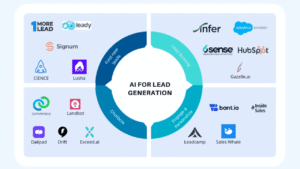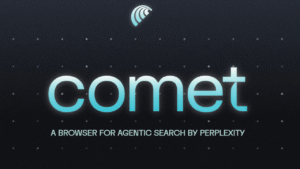Duolingo CEO Luis von Ahn declared the company will become “AI‑First,” asserting that “when there’s a shift this big, the worst thing you can do is wait” and likening this to Duolingo’s 2012 mobile‑first decision that led to industry‑leading growth.
The strategic imperative stems from AI’s ability to massively accelerate content production, adapt lessons dynamically, and reduce reliance on external contractors, thereby streamlining operational costs and improving margins.
Executives at Duolingo emphasize that full‑time employees will not be replaced, but contract roles performing repetitive tasks—such as translation and proofreading—will be phased out as generative AI assumes these functions.
This approach caters to top‑level leadership priorities: scalability, cost efficiency, and market expansion, while maintaining brand values and employee engagement.
Technology Implementation
Generative AI for Course Creation
-
Duolingo deployed in‑house generative AI pipelines to auto-generate draft lessons, quizzes, and localized content, cutting course development from 12 years to 12 months for 148 new offerings.
-
Human experts now focus on quality assurance, scenario validation, and cultural nuance tuning, ensuring AI outputs meet CEFR standards and pedagogical rigor.
AI in Talent and Performance
-
Duolingo integrates AI into recruiting workflows, using algorithms to screen and rank candidates for full‑time roles, accelerating time‑to‑hire by up to 30% and improving candidate fit metrics.
-
Performance reviews leverage AI‑driven analytics on user‑behavior insights (e.g., course launch metrics) and employee productivity data, enabling data‑backed feedback and targeted upskilling plans.
Platform Partnerships
-
The company’s Duolingo Max tier, built on OpenAI’s GPT‑4, offers AI‑powered conversational practice and explanations, driving upsell from free to paid plans and boosting lifetime value.
-
Duolingo collaborates with Google, Meta, and Microsoft labs to integrate multimodal AI features—such as speech recognition and video‑based role‑plays—to enrich interactive learning experiences.
Business Metrics & Financial Impact
Revenue Growth
-
Q1 2025 revenue reached $230.7 million, outpacing consensus of $223 million, a 3.5% beat attributed to strong uptake of AI‑powered Max and Family plans.
-
Full‑year 2025 revenue guidance was raised to $987–$996 million, up from $962.5–$978.5 million, reflecting the material contribution of AI innovations to top‑line growth.
Course Catalog Expansion
-
The 148-course launch represents a record 47% increase in Duolingo’s catalog, enabling entry into underserved language markets and driving 25% growth in daily active users in regions like Asia and Latin America.
Subscriber Metrics
-
Duolingo surpassed 9.5 million paid subscribers in late 2024 and reached 40.5 million daily active users, indicating strong conversion and retention fueled by AI‑personalized experiences.
Risks & Governance
Quality & Credibility
While AI accelerates content creation, maintaining transparency and accuracy is critical. Duolingo uses human‑in‑the‑loop checks and AI‑audit logs to trace content provenance and ensure pedagogical soundness.
Workforce Transition
Phasing out contractor roles poses talent management challenges. Duolingo mitigates this through training programs to upskill full‑time staff in AI oversight and tooling, preserving corporate culture and expertise HCAMag.
Regulatory & Ethical
AI‑enabled hiring and performance reviews must comply with EEOC and GDPR guidelines. Duolingo has instituted bias‑detection frameworks and consent-based data usage to uphold fairness and privacy.
Strategic Outlook & Next Steps
-
Scale AI‑Generated Content: Extend generative pipelines to verticals beyond language—math, STEM modules, and professional training—leveraging reusable AI architectures.
-
Deepen Personalization: Implement reinforcement learning for adaptive difficulty tuning and real‑time feedback loops, increasing learner engagement metrics and subscription longevity.
-
Monetize AI Insights: Package anonymized user‑behavior data and learning analytics as B2B offerings to educational institutions and corporate training platforms.
-
Expand Partnerships: Broaden collaboration with device OEMs (e.g., Samsung, Apple) to embed Duolingo AI directly into mobile and wearable hardware for seamless learning contexts.
By fully embracing its AI‑First model, Duolingo is poised to maintain leadership in digital education—driving sustainable growth, operational agility, and global market penetration through scalable, data‑driven innovation.









